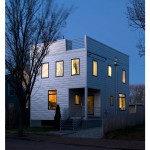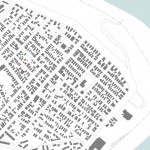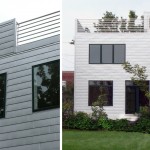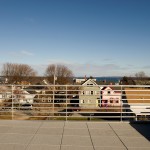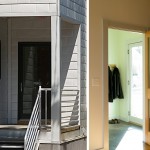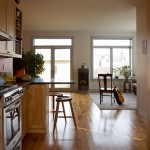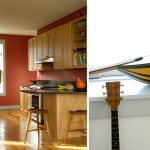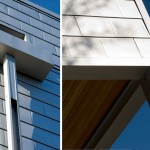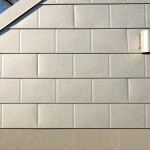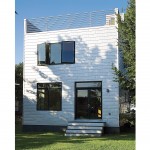Urban Infill
Project Name: Urban Infill
Located on a small lot along a quiet but urban residential street near downtown Portland, this small two-bedroom house holds its own amidst the adjacent larger houses. Inspired in part by the simple form of nearby triple-decker buildings, its contemporary design complements the eclectic and more traditional houses common in the neighborhood. This house replaces an older house that had to be demolished because of its deteriorated condition.
As is typical along the street, the first floor is elevated above grade. Thus raised above the sidewalk, the entry porch is a familiar, welcoming feature common in the area, and its steel steps are a contemporary interpretation of a common element. An open rail above at the roof is located directly above to add emphasis to the front door. The adjacent solid parapet angles out slightly to provide a subtle accent at the top of the wall. Metal shingles give the building a pleasing texture and scale. While a decidedly contemporary material, these shingles pay homage to similar textures in the surrounding neighborhood. The functional collector and downspout also add texture and scale to the side elevation.
The 1,200 SF house has an open plan layout on the first floor for kitchen, dining, and living. Large sliding doors connect the living area to the small backyard. The master bedroom, a bedroom/study, and a comfortable bath are located on the second floor. The simple stair runs up through the second floor to provide access to a roof deck that has views of the surrounding area and Casco Bay.
In large part, the size and simple shape of the house were mandated by the very tight budget. But the small size is also reduces the environmental footprint of the house. Double-stud exterior walls increase energy efficiency by providing room for more insulation and by reducing thermal bridging. In addition to providing views and relatively private outdoor space, the flat roof allows solar PV collectors to be oriented close to true south, which is off the front corner of the house. The house uses both electricity and natural gas. The owner has monitored actual energy use for a number of years. In 2013, energy use was 15,020 Btu/SF. This is a very efficient house, indeed.
The house demonstrates that successful infill housing does not have to mimic historic styles, and that carefully designed small houses can feel and “live” larger than their actual size.

